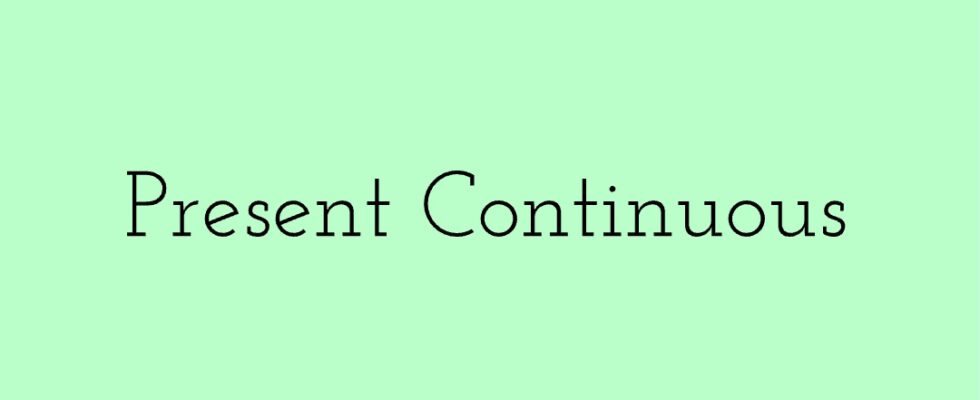In this lesson, we focus on the form and use of the present comtinuous tense and give example sentences for the present continuous tense.
Form of the present continuous tense
It is formed with the use of auxiliary verb “be” and adding -ing to the main verb. So, if you need information about that, you can check the use of the verb “be” as an auxiliary verb in English. Now, let’s check the affirmative form of the present continuous tense below:
Affirmative form of the present continuous tense
First of all, use the present participle of the auxiliary verb be after the subject. Then use the main verb and add -ing to the main verb. So, see the samples below.
- I am speaking English.
- You are speaking English.
- He/she/it is speaking English.
- We are speaking English.
- You are speaking English.
- They are speaking English.
Negative form of the present continuous tense
This time, you need to add the “not” that is an adverb to form negative phrases in English. So use the add after auxiliary verb. Also, you can combine the auxiliary verb and the negative word “not” such as isn’t and aren’t. Now check the sample sentences below.
- I’m not reading a book.
- You are not reading a book. / You aren’t reading a book.
- He/she/it is not reading a book / He/she/it isn’t reading a book.
- We are not reading books. / We aren’t reading bools.
- You are not reading books. / You aren’t reading books.
- They are not reading books. / They aren’t reading books.
Interrogative form of the present continuous tense
In order to form the interrogative, the auxiliary verb “be” is used before the subject. Now check the samples below.
- Am I working?
- Are you working?
- Is he/she/it working?
- Are we working?
- Are you working?
- Are they working?
The spelling if the -ing
The spelling of the -ing doesn’t change when you add it to a verb endlng in -y.
- Carry > carrying
- Hurry > hurrying
When a verb which has one syllable, has a vowel and ends in a single consonant, then the consonant is doubled befire the -ing. So check the examples below.
- Run > running
- Stop > stopping
In some verbs ending in a single e, we drop the -e before -ing. So, see the sample verbs.
- Love > loving
- Argue > arguing
If the verb ends in ee, then don’t drop the ee, and just add -ing.
- See > seeing
Use of the present continuous tense
Firstly we use the present continuous tense for the actlons that are happening at the moment / now. Therefore, we can use the adverbs such as now, at the moment, at present, right now, just now… So read the samples below.
- The baby is crying at the moment.
- Why is she crying?
- What’s happening here?
On the other hand, we can also use this tense for the temporary situations even though the action isn’t happening right now. So, see the examples below.
- I’m reading a novel by Charles Dickens.
- She’s watching series during this period.
For definite arrangements, we can use present continuous tense.
- Are you doing anything tonight?
- I’m joining Jane’s party tonight.
For actions that are continuous, we can use this tense.
- He’s always studying English.
- She’s always reading.
Some verbs that express involuntary senses, feelings and emotions, and are also related to mental activity and possession, are not used with the present continuous tense. So some of hese verbs are hate, like, love, dislike, want, wish, know, believe, realize, belong, own etc.
